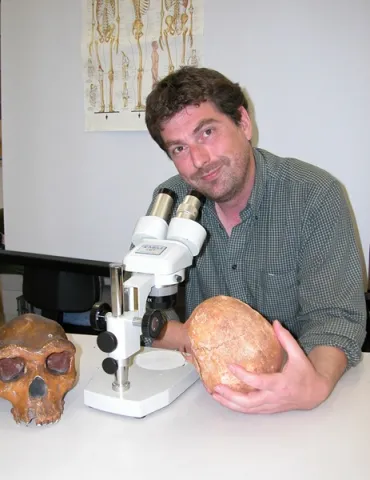Project overview
Transhumant pastoralism rendered previously unproductive land productive by moving animals away from the best arable areas and into areas unsuitable for growing crops. The wealth of many societies and nations was founded upon complex pastoralism. Today, the importance of Alpine (high-altitude) landscapes is internationally recognised - strictly speaking; an "Alp" is a high mountain pasture - a cultural landscape modified and managed in some areas since the Neolithic or Bronze Age.
Despite their importance, we know relatively little about the development of the transhumant pastoral system that has faceted these landscapes. Our understanding of what animals were exploited, and for what purpose/s, is also limited. These landscapes contribute to regional and national economies and cultures via the production of meat, cheese, wool, and related by-products. Today, sheep (for meat and dairy products) dominate the southern alpine pastoral system cattle and milk production dominate the northern Alps - it is unlikely that this was always so.
We aim to address the following specific questions:
- What are the origins and evolution of long-distance transhumance?
- Can we recognise the evolution of pastoral landscapes associated with long-distance transhumance?
- Were there temporal variations in the management (transhumant) systems and exploitation of sheep/goat and cattle?
- With specific regard to historic period long-distance transhumance routes, how do the results from the science-based archaeological analyses compare with the information gleaned from written sources?
And these are the associated objectives
- characterise and interpret the range of archaeological remains (built structures and artefacts) associated with Iron Age to medieval pastoralism
- identify the presence of pasture and domesticated livestock through the integration of palynological and aDNA analyses from lake sediment cores
- characterise the composition (species mix, age profiles) of flocks and herds in the study areas via traditional and modern scientific zooarchaeological methods
- undertake sequentially sampled strontium and oxygen isotopic measurements of faunal remains with a view to reconstructing the mobility of Iron Age through to medieval sheep and cattle in the study area
- review current assessments of medieval pastoral and transhumant systems in the study region, contrasting the archaeological and scientific evidence for transhumant mobility with documentary evidence, thus characterising the limitations of isotopic and historical approaches to understanding transhumance patterns.
Despite their importance, we know relatively little about the development of the transhumant pastoral system that has faceted these landscapes. Our understanding of what animals were exploited, and for what purpose/s, is also limited. These landscapes contribute to regional and national economies and cultures via the production of meat, cheese, wool, and related by-products. Today, sheep (for meat and dairy products) dominate the southern alpine pastoral system cattle and milk production dominate the northern Alps - it is unlikely that this was always so.
We aim to address the following specific questions:
- What are the origins and evolution of long-distance transhumance?
- Can we recognise the evolution of pastoral landscapes associated with long-distance transhumance?
- Were there temporal variations in the management (transhumant) systems and exploitation of sheep/goat and cattle?
- With specific regard to historic period long-distance transhumance routes, how do the results from the science-based archaeological analyses compare with the information gleaned from written sources?
And these are the associated objectives
- characterise and interpret the range of archaeological remains (built structures and artefacts) associated with Iron Age to medieval pastoralism
- identify the presence of pasture and domesticated livestock through the integration of palynological and aDNA analyses from lake sediment cores
- characterise the composition (species mix, age profiles) of flocks and herds in the study areas via traditional and modern scientific zooarchaeological methods
- undertake sequentially sampled strontium and oxygen isotopic measurements of faunal remains with a view to reconstructing the mobility of Iron Age through to medieval sheep and cattle in the study area
- review current assessments of medieval pastoral and transhumant systems in the study region, contrasting the archaeological and scientific evidence for transhumant mobility with documentary evidence, thus characterising the limitations of isotopic and historical approaches to understanding transhumance patterns.
